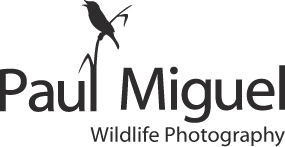
My work predominantly consists of Wildlife Photography but I also enjoy shooting landscapes along with generic countryside images suitable for stock. For years I used the Canon 17-40mm f/4 USM lens for my landscape photography. The results were good but the edge softness always annoyed me – particularly in the corners where at times I felt it too unacceptable. Although I had the facility to shoot at 17mm, the fact is – I never did! Simply due to the increased edge softness I always zoomed in to at least 21mm to improve things. Working professionally and submitting to discerning picture libraries I always strived to get the most out of the lens – trying to use it at a mid-range focal length where possible and keeping the aperture around f/11 to maximise image quality.

Upgrading to a Canon 1D X Mark i showed an improvement in my images but I still felt I needed to improve the landscape quality. I toyed with the idea of the Canon 16-35mm which has an excellent reputation and would no doubt be a step up. But I also thought long and hard about switching to a fixed wide angle. A good quality fixed lens should always be sharper than a zoom – and it does make sense. I’ve certainly found it to be the case in my experience. I already had a fixed 50mm f/1.8, giving excellent performance, so I considered switching my 17-40mm zoom for a fixed wide angle. Overall image quality was a consideration but there was perhaps a more important issue related to zoom lenses. Now, zoom lenses are great for many situations; they are flexible and mean you don’t have to stop, change lens and carry on with your shoot. But what they also do is: make you lazy! This might not apply to everyone, but for me certainly, a fixed lens is a better option and it makes me a better photographer. Why? Well, with zoom lenses you can put yourself in great surroundings and change focal point to find the best images. But’s that not how it should be: the art of Landscape Photography is to search for your images… and that means moving around.! Whilst I like to think I wasn’t falling into the trap, I probably was. Essentially I was staying more in one place and adjusting my zoom, rather than thinking about the look of the image (for a given focal length) and finding the composition to suit.

So, after reading many reviews, I opted for a Canon 24mm 2.8 lens. I now had two main lenses for landscape photography: the 24mm and my 50mm, along with a 100mm macro as an extra option for picking out sections of the landscape. I was itching to try the 24mm quickly so within two days of receiving it I headed out for a night shoot with my good friend Nik Goulthorp. We visited Millenium Bridge, Castleford – an excellent place for night photography that offers a number of compositions. I attached the 24mm and set to work. With this fixed lens I had to keep moving around to find the best viewpoint; there was no room to tweak the zoom. I had to find the very best spot. To be honest, it was refreshing and I felt more like a true landscape photographer.


Even during this one initial shoot with the 24mm I could feel myself working harder; thinking more. With one focal length on the camera I was forced to think about the overall composition and discover the best viewpoint. In fact, it’s taken me back to the old days when I used to shoot with a Bronica ETRS medium format camera – a beautiful piece of equipment. Back then, I would carry just two fixed lenses – a wide angle and a standard. I would then set about finding the best compositions that would work best for these lenses. Many of theses images found their way into calendars and a few Dalesman front covers too. Time will tell, but I think I will begin to work better with my new combination. I can’t wait til my next landscape shoot! Zoom lenses are not bad pieces of kit, just don’t fall into the trap of letting the lens do the work. The most important factor in creating the image is always – the photographer’s eye!!
Interested in joining me for a Photography Workshop? I’ve worked with hundreds of photographers over the years both in group workshops and on a One to One basis. Check out the range of Photography Courses including the soon to be added Night Photography Workshops – planned for Autumn 2017!


Excellent blog Paul! I recognise a lot of what you’re saying here. Like you I predominantly shoot wildlife but with a bit of landscape in the mix, and I’ve started to increase the landscape recently. Like you I’ve noticed one or two quality issues with my wide zoom (in my case it’s the Nikon 24-120mm). Like you I used fixed focal length lenses back in the days of film – a 50mm, a 35mm and a 28mm. And yes, there’s definitely an element of laziness that creeps in all too easily when you can just turn the barrel to change the viewpoint. I think it won’t be long before I’m investing in a couple of fixed lenses too.
Thanks Dave. Really appreciate your comments. I’m really looking forward to a daytime landscape shoot to see how I approach things now.